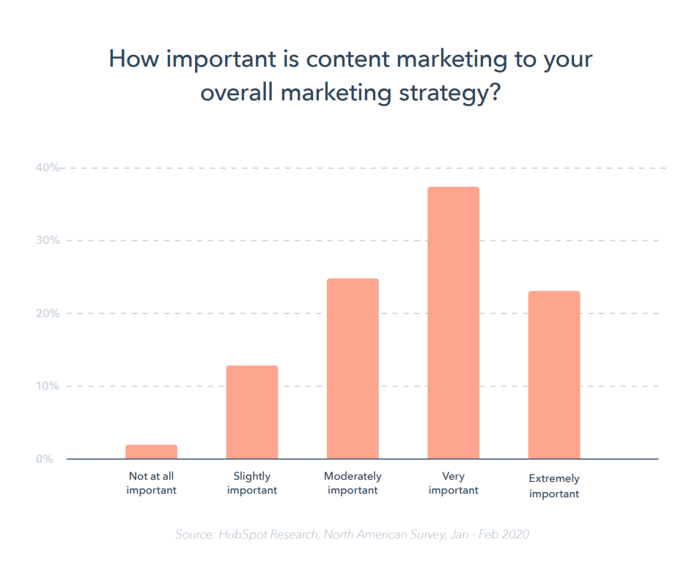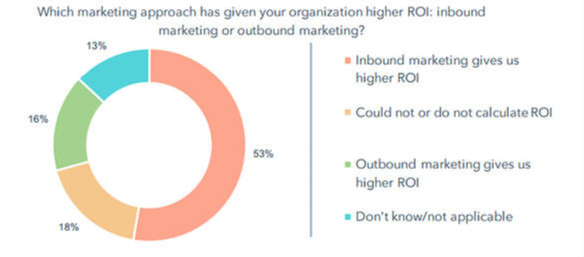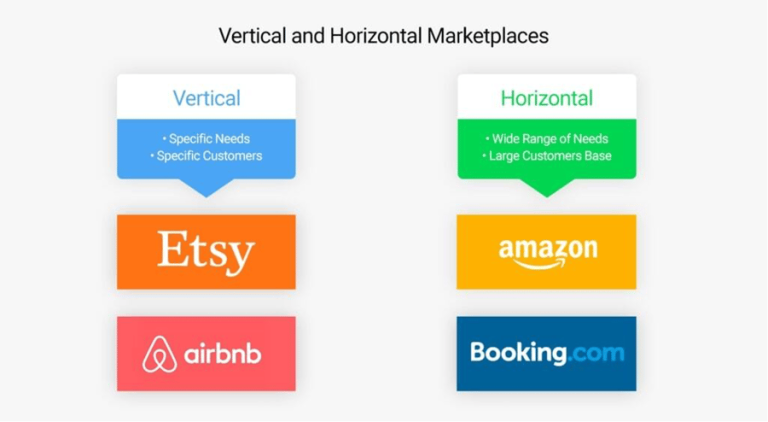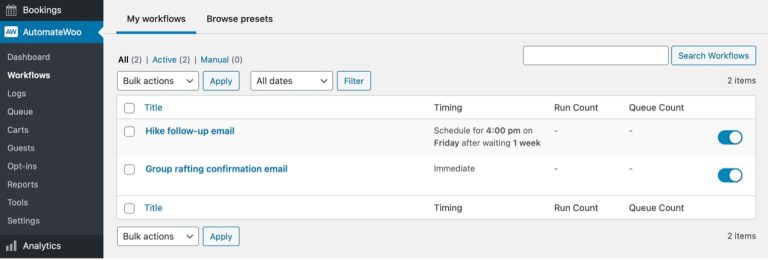The eCommerce industry continues to grow rapidly. And while it’s an enormous market, it’s also very competitive, so you must ensure you approach your marketing with the right tactics.
Good marketing makes more people aware of your brand and your products. It draws them to your website, social media pages, and any eCommerce platforms you utilize. You need to look at how you do your marketing and analyze the results you get from different tactics to see what works best for you.
One of the main goals of any type of digital marketing is to capture the attention of your target audience. You wouldn’t try and sell a car to someone who can’t drive (or doesn’t want to), and it’s the same for any product. You want to create interest and nurture relationships with customers who have a genuine interest in your brand and products.
The two main types of marketing to think about are inbound and outbound. When you consider inbound marketing vs. outbound marketing, what are the main differences you’ll find? What benefits does each type offer your organization, and how much time and money would you have to invest in each?
What is Inbound Marketing?
In order to have a good overview of inbound marketing vs. outbound marketing, you need to understand what each type means and does. Inbound marketing covers those aspects of your strategy where you attract the attention of potential customers. That’s usually achieved by creating engaging content that makes the customer want to read — and know — more about you.
The “inbound” part refers to consumers visiting your website, page, or platform of their own accord. Their starting point may be a search engine, or they may see an ad promoting your brand or product.
This can create an initial interest in what you have to say (and sell), and they’ll click through to the relevant page or platform. For example, if you create a blog on the tech challenges of running a cloud contact center, people in that sector may click through to read more.
Depending on your business model, you may use different types of content in your inbound marketing strategy. The most obvious example is blogging (SEO optimized, of course), but you could also present white papers, free e-books, relevant webinars, infographics, or video guides to your products. Any content that attracts interest and engages with potential customers is inbound marketing.
What is Outbound Marketing?
You could think about outbound marketing as the more “traditional” type of marketing as it existed long before we had the internet or websites. While some elements of outbound marketing are more modern (such as email marketing), most elements have been around for decades. This can include TV or print ads as well as cold calling.
The “outbound” part comes from your organization reaching out to potential new customers. They may like your outbound marketing efforts, but they may also be disinterested. So, there’s an element of gambling with outbound marketing since most of your audience may show no interest in your brand or products.
There’s also a more “intrusive” aspect to outbound marketing. While people may be attracted by something you publish and then choose to visit your platform, the material may be unwanted and unwelcome with outbound marketing. Due to this annoyance factor, more and more organizations tend to focus on inbound marketing instead.
Inbound Marketing vs. Outbound Marketing: The Main Differences
So, you now have some idea of what inbound marketing vs. outbound marketing actually is, but it can help to know what the main differences are between the two.
1. Content
With inbound marketing, the focus is on businesses creating content that attracts potential customers and makes them want to know more (or even make a purchase). The content should be engaging and relevant to specific demographic groups so that they’ll be interested and want to click through to your website or social media page.
Knowing how to use your social media page(s) to improve results can be crucial.
Outbound marketing, however, creates content that can intrude on people’s days and may or may not make them want to know more about the brand. It focuses on creating content that may (or may not) capture the attention of potential customers when they see it.
2. Trust
Inbound marketing can help establish a relationship based on trust and credibility by creating content people want to see, such as “how to” videos showing what a product can do.
While outbound marketing may have the same goal, it can often fall short due to the intrusive way it presents content.
3. Quality vs. Quantity
Inbound marketing is more about quality than quantity. The focus of inbound marketing is more on demographic groups that already have some interest in your products.
Outbound marketing instead focuses on quantity, aiming marketing efforts at large groups of people in the hope that some will be interested in what you have to say.
4. Sustainability
One other major factor to consider when thinking about inbound marketing vs. outbound marketing is that the former is more sustainable than the latter. Inbound marketing seeks to create long-term relationships that not only lead to a single purchase but to customer retention and higher CLV (customer lifetime value). Outbound marketing may have some effectiveness in the short term, but it will create fewer long-term relationships.
Inbound Marketing vs. Outbound Marketing: Strategies to Use
As these are two very different types of marketing, getting them right can involve completely different tactics (with some similarities). If you want to choose between them or even use both, what strategies should you consider when building a plan?
Inbound Marketing Strategies
1. Create engaging and relevant content.

Source: HubSpot
Bill Gates’ statement that content is king may be a well-worn cliche, but it remains as relevant today as when he said it. Great content is the foundation of any successful inbound marketing strategy, whether it’s engaging blogs, informative white papers, or other forms. Three points should lie at the heart of your content strategy:
- What type of content will you create?
- Who will create that content (in-house writers, freelancers, or guest bloggers)?
- How often will you publish your content?
2. Use SEO techniques.
You can’t depend on large numbers of people finding you by “accident.” You want people to find you easily and quickly via search engines, which means optimizing your content for searches. SEO (search engine optimization) means your content will contain keywords and phrases that people commonly use. Still, you should also ensure that you:
- Make your site easy to navigate so people find what they’re looking for.
- Use a proper tag structure throughout your content.
- Optimize your website for mobile devices, as over 90% of internet users access the web via a mobile device.
3. Schedule and publish.
You could be creating the best content in the world, but not many people will see it if you don’t publish it regularly and in the right places. That means it shouldn’t just be on your website but also on any social media pages you have and any other platforms you promote your organization on.
If you create blogs, look at opportunities for being a guest blogger and inviting other bloggers to write for you. Also, follow a schedule where possible.
4. Analyze and adjust.
Nobody expects marketing teams to get things perfect the first time. That means you should identify the key metrics and KPIs relevant to your business and content and analyze the results regularly.
This can include conversion rates and where any leads are coming from (or what demographic group they belong to). Be prepared to adjust what you do and how you do it if those results don’t meet your expectations. To keep track of the right metrics, ensure that you’re using website analytics tools designed to monitor inbound marketing.
Outbound Marketing Strategies
So, you have some ideas of what’s involved in the inbound side of the inbound marketing vs. outbound marketing debate. But what about outbound marketing? How can you make that effective?
1. Identify your potential customers.
If you’re marketing contact center technology, for example, there’s little point in sending marketing material to people with no interest in that sector. That means you should be trying to build targeted lists for your outbound marketing efforts.
You may identify suitable targets via platforms such as LinkedIn or specialist social media groups. Create your ideal buyer persona, and then try and populate your marketing lists with people who fit that persona (or are close to it).
2. Use personalization where you can.
While outbound marketing is more of a “cast your net and hope for the best” strategy, that doesn’t mean you can’t use personalization. For example, if you have built a targeted list, you may have the names and positions of key decision-makers. They’ll be more likely to look at any marketing material you send if it has been personalized with them in mind.
3. Don’t give up.
Yes, many people indeed see outbound marketing as intrusive and unwanted. However, that doesn’t mean you shouldn’t follow up on initial contacts, especially when you have a more targeted list.
There may be a good reason they haven’t responded to your first contact, but be sure to wait a week (or two) before following up with them. But remember, if they haven’t connected with you after two or three efforts, it may be time to remove them from your list.
The Takeaway

Source: Incisive Edge
For many organizations, the debate about inbound marketing vs. outbound marketing can be divisive, and many of your team will want to use one or the other. There are many different tactics (and sub-tactics) you can consider using.
Often, emotional marketing can be a great tool for eCommerce businesses. But some eCommerce businesses may want to focus on marketing a wide range of quality products instead.
You need to look at your business model and decide what side of the inbound vs. outbound argument you support. In fact, it may be that you find a hybrid model works best for you, with a combination of both types producing the positive results you desire.
Whatever strategy you decide to use, you should constantly review the related metrics and KPIs to ensure your strategies work. You should also be prepared to change course when necessary. Marketing strategies are fluid, and what works well in January may not still be working the same when November comes.



